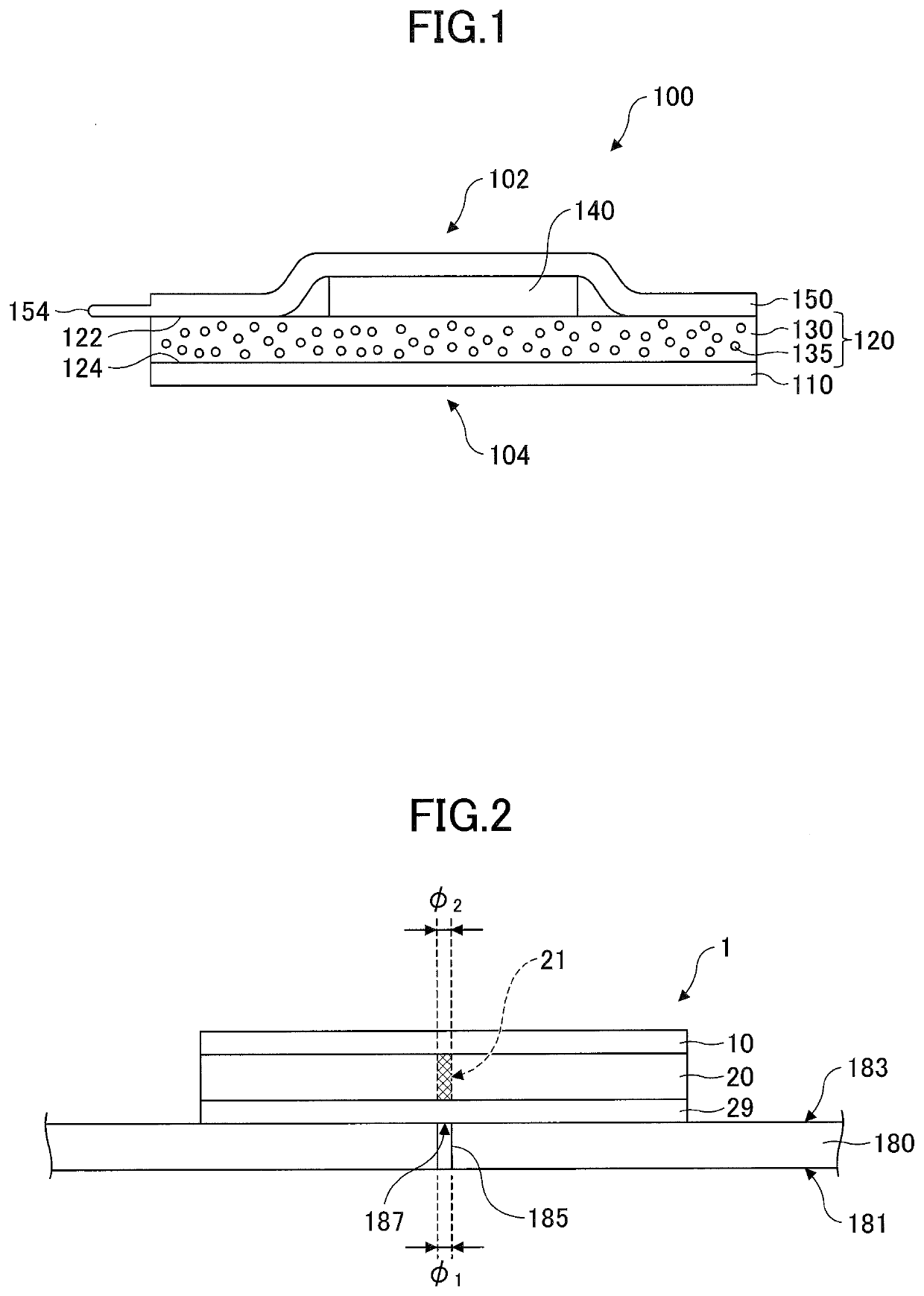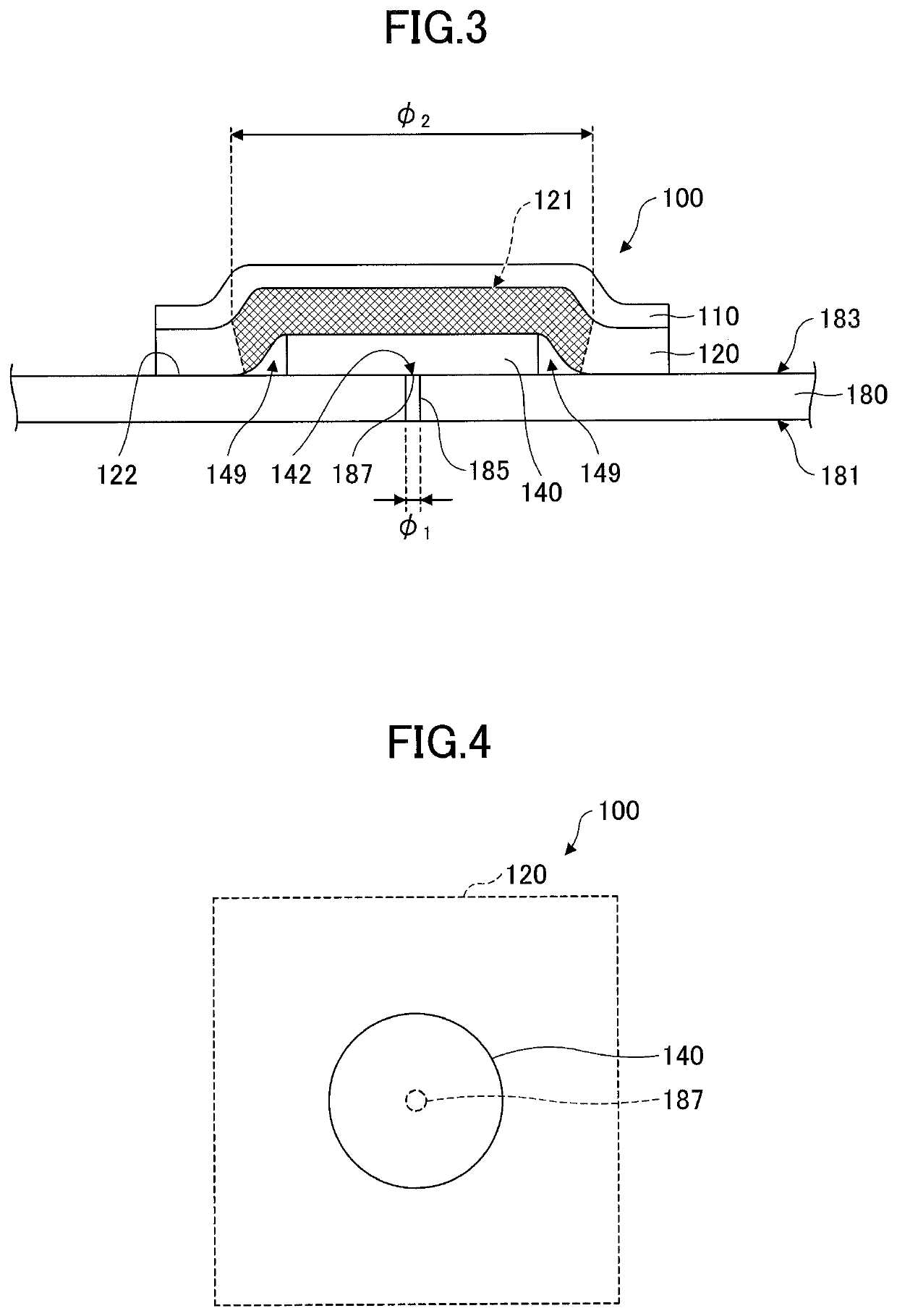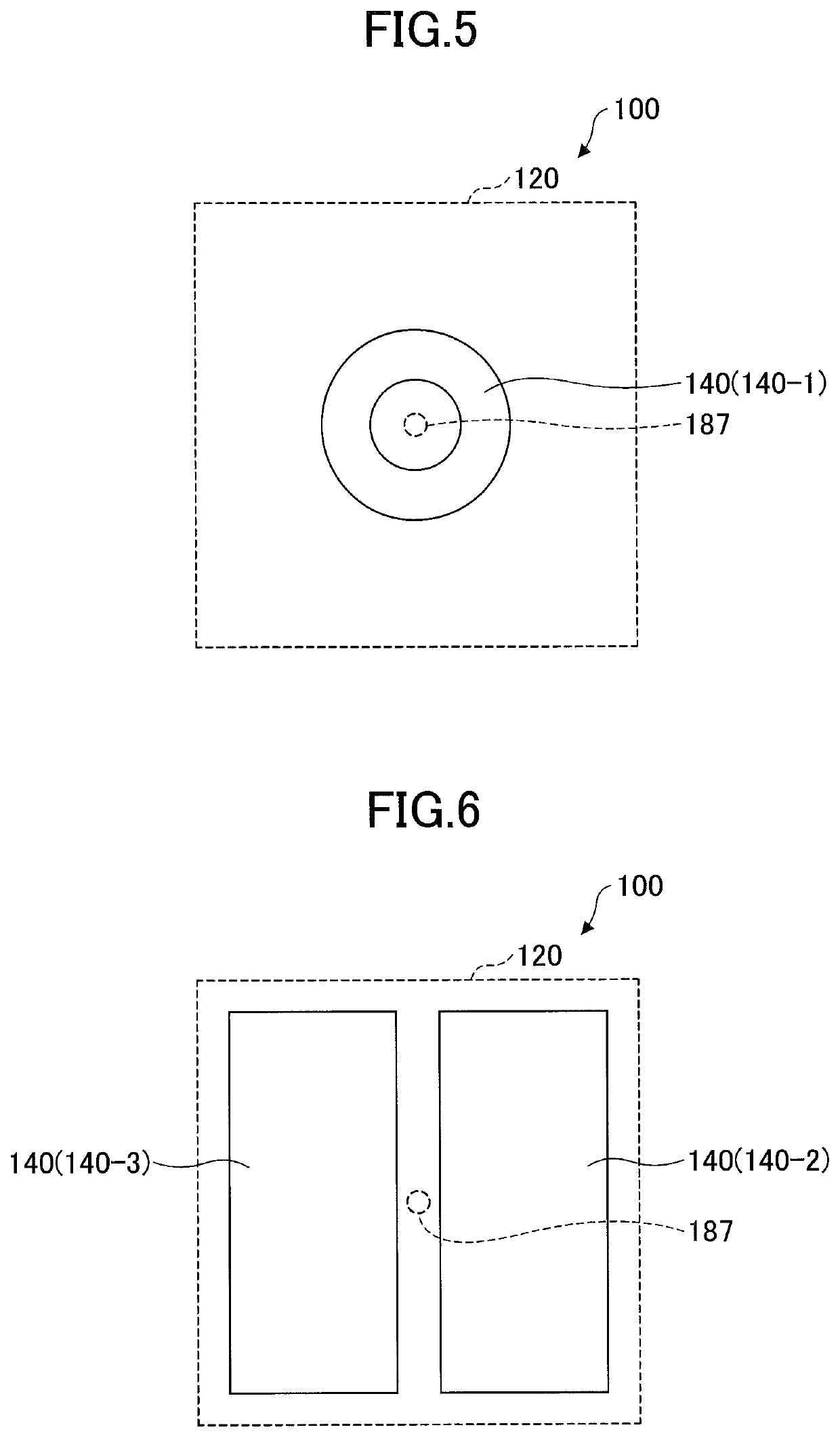Gas detection element
- Summary
- Abstract
- Description
- Claims
- Application Information
AI Technical Summary
Benefits of technology
Problems solved by technology
Method used
Image
Examples
example 1
[0241]A gas detection element was manufactured by the following method.
[0242]The gas detection element had a configuration including a backing, an undercoat layer, a gas detection layer including a chemochromic pigment, and a spacer in the stated order.
(Preparing Backing and Spacer)
[0243]As the backing, polyimide (Kapton) (Dupont High Performance Films Circleville, Ohio, USA) having a thickness of 25 μm was prepared.
[0244]As the spacer, a non-woven fabric (HOP-60HCF(170); Hirose Paper Mfg Co., Ltd.) with 10 mm in length and 10 mm in width was prepared. The thickness of the non-woven fabric is approximately 164 μm.
[0245]The Gurley method was used to evaluate the air permeability of the spacer. For measurement, a Gurley type densometer (No. 323-AUTO; manufactured by Yasuda Seiki) was used, and the measurement was performed in accordance with JIS P8117.
[0246]As a result of the measurement, the air permeability of the spacer was 0.06 sec / 100 cm3.
(Coating Liquid for Undercoat Layer)
[0247...
example 2
[0270]A patch-type gas detection element (hereinafter referred to as a “sample 2”) was manufactured by a method similar to that of Example 1.
[0271]However, in Example 2, two non-woven fabrics were stacked and used as a spacer. Thus, the thickness of the spacer was 328 μm.
[0272]The air permeability of the spacer was measured by the above-described method. The air permeability of the spacer was 0.11 sec / 100 cm3.
example 3
[0273]A gas detection element was manufactured by a method similar to that of Example 1.
[0274]However, in Example 3, a silicone-based thermal diffusion sheet (EX40015DS; manufactured by Dexerials Corporation) having a thickness of approximately 150 μm was used as a spacer.
[0275]Accordingly, a patch-type gas detection element (hereinafter referred to as a “sample 3”) was obtained.
PUM
| Property | Measurement | Unit |
|---|---|---|
| Thickness | aaaaa | aaaaa |
| Thickness | aaaaa | aaaaa |
| Fraction | aaaaa | aaaaa |
Abstract
Description
Claims
Application Information
 Login to View More
Login to View More - R&D Engineer
- R&D Manager
- IP Professional
- Industry Leading Data Capabilities
- Powerful AI technology
- Patent DNA Extraction
Browse by: Latest US Patents, China's latest patents, Technical Efficacy Thesaurus, Application Domain, Technology Topic, Popular Technical Reports.
© 2024 PatSnap. All rights reserved.Legal|Privacy policy|Modern Slavery Act Transparency Statement|Sitemap|About US| Contact US: help@patsnap.com










